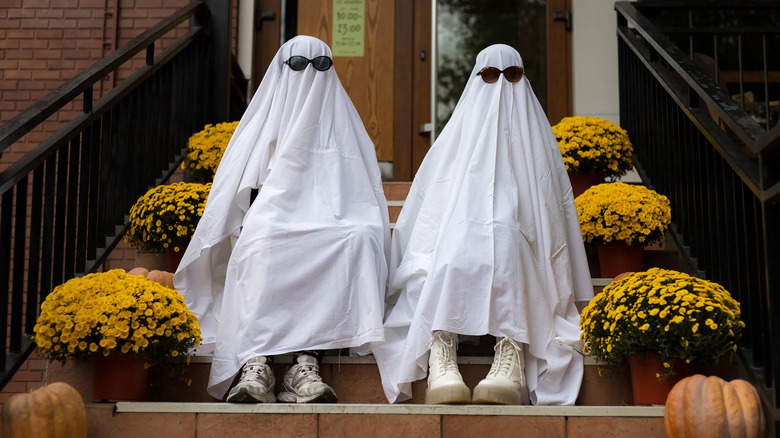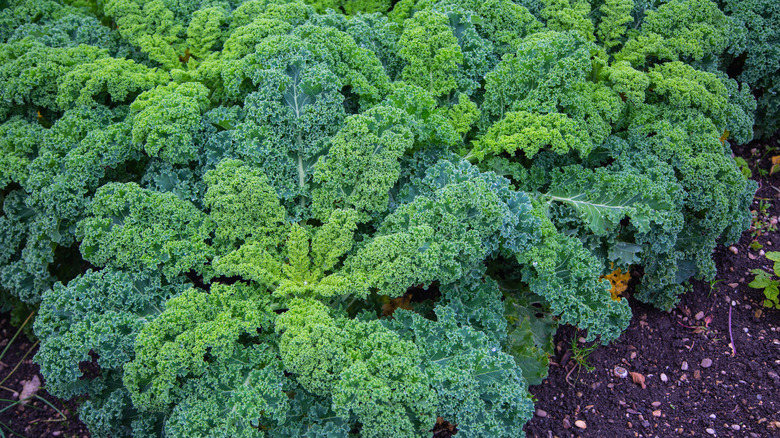One Early Halloween Food Tradition Was All About Romance
While many Americans celebrate Halloween, few may know why it exists. Aside from the holiday serving as the perfect excuse to eat candy and wear a costume, there's a method behind the madness. According to History, the holiday as we know it actually stems from an old Celtic tradition called Samhain.
In ancient times, those involved in Celtic culture would wear costumes and light bonfires in an effort to ward off ghosts. Since the Celts believed November 1 marked the end of summer and the start of the new year, October 31 was the perfect time for Samhain to commence. Winter meant more death and crop loss, and some believed this night opened the gates between the living and the dead. Later in the eighth century, Pope Gregory III created All Saints Day on November 1, and incorporated many of the traditions of Samhain, per History. Back then, the evening before All Saints Day was called All Hallows Eve, which eventually became Halloween.
While the origins of the spooky holiday itself are interesting, many different traditions around Halloween have sprung up over time. Carving jack-o'-lanterns and telling scary stories are a few of the most common traditions, but some other very strange practices have taken place during the spooky season across history. One of the more peculiar ones involves a future-predicting piece of kale.
Why kale lives on in Halloween folklore
So, what does kale have to do with Halloween? Back in the Iron Age, kale meant a great deal. According to Smithsonian Magazine, some people in Ireland and Scotland even used to rely on kale stalks to help determine their love lives. That's right, kale used to be more matchmaker than a superfood. As mentioned before, October 31 was a superstitious day where people performed rituals to ward off bad luck, including a matchmaking game.
Instead of trick-or-treating, some eligible young people blindfolded themselves and took to the garden where they would uproot a kale stalk, per Smithsonian Magazine. Depending on what piece the participant picked, the information could determine their future spouse. For example, a dried-up, short stalk could mean just that in the characteristics of a partner. If the kale's taste was bitter or sweet meant a lot too, and even a lot of dirt clinging to a root could mean a future partner with a large fortune. But why kale in the first place? Some historians attribute its use to its wide availability of it at the time, per Atlas Obscura.
Now while you may want to create your own tradition this Halloween, we don't recommend putting your love life in the hands of leafy greens as a candidate. Save the superfood for some baked kale chips. But if you don't, we hope for a healthy and sweet pick.

